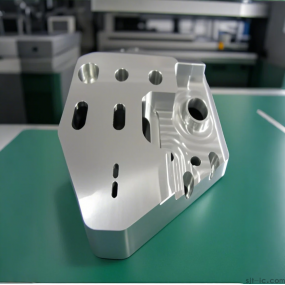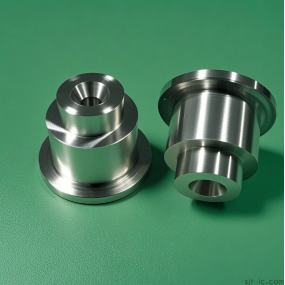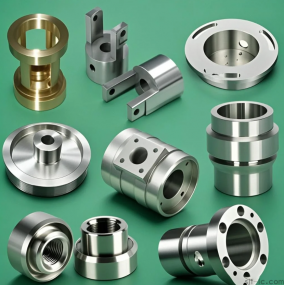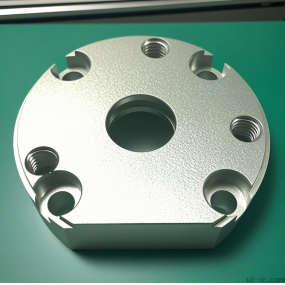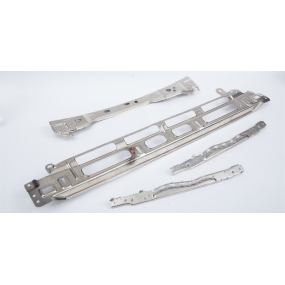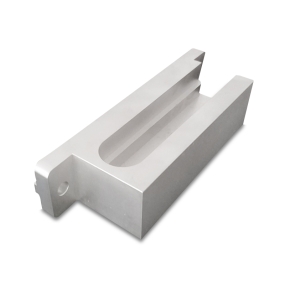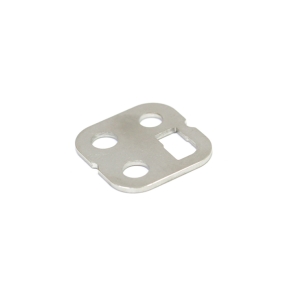In the process of CNC Machining, there are various methods to diagnose faults, mainly including the following: alarm indicator lights displaying faults: In the CNC system of modern CNC machine tools, in addition to self diagnostic functions and status display "software" alarms, there are also many "hardware" alarm indicators distributed on power supplies, servo drives, and input/output devices. Based on the indications of these alarm lights, the cause of the malfunction can be determined.  tapping method: When a system malfunction appears as if it is present or absent, tapping method can often be used to detect the location of the fault. This is because the CNC system consists of multiple printed circuit boards, each with many solder joints, and the boards or modules are connected through connectors and cables. Any virtual soldering or poor contact may cause malfunctions. When lightly tapping the suspected areas of virtual soldering and poor contact with insulating material, the fault will definitely repeat itself. Local heating method: After long-term operation, the components of CNC systems will age and their performance will deteriorate. When they are not completely damaged, the faults that occur become intermittent. At this point, a hot hair dryer or soldering iron can be used to locally heat up the suspected components, accelerate their aging, and thoroughly expose the faulty parts. Of course, when using this method, it is important to pay attention to the temperature parameters of the components and not to damage the previously good ones. Principle analysis method: Based on the composition principle of the CNC system, the logical levels and characteristic parameters (such as voltage values or waveforms) of each point can be analyzed logically, and then measured, analyzed, and compared using a multimeter, logic pen, oscilloscope, or logic analyzer to locate the fault. Spare board replacement method: Using spare circuit boards to replace templates with suspected faults is a fast and simple way to determine the cause of faults. Commonly used functional modules in CNC systems, such as CRT modules, memory modules, etc. Exchange method: In CNC machine tools, there are often modules or units with the same function. By exchanging the same modules or units with each other and observing the fault transfer, the location of the fault can be quickly determined. Measurement comparison method: For the convenience of detection, modules or units are equipped with detection terminals. Instruments such as multimeters and oscilloscopes are used to detect the level or waveform through these terminals. The normal value is compared with the value at the time of the fault to analyze the cause and location of the fault. Pre acceptance: This is an important step in the machine tool acceptance process. The pre acceptance stage should check whether the main performance and accuracy indicators of the machine tool meet the requirements, and special attention should be paid to the stability and reliability of the machine tool. At the same time, it is also necessary to check whether the accessories and tools of the machine tool are complete, as well as the appearance and cleanliness of the machine tool. Acceptance testing: Acceptance testing is the process of comprehensively inspecting the performance and accuracy of machine tools. At this stage, performance tests should be conducted on the machine tool under various operating conditions, including high speed, high feed rate, low-speed stability, etc. At the same time, precision testing should also be conducted, such as positioning accuracy, repeat positioning accuracy, etc. Operational testing: After completing pre acceptance and acceptance testing, the machine tool should undergo a period of operational testing. During this period, the stability and reliability of the machine tool should be observed, and any abnormal situations should be recorded. At the same time, the machining capability and quality of the machine tool should also be inspected and evaluated.
tapping method: When a system malfunction appears as if it is present or absent, tapping method can often be used to detect the location of the fault. This is because the CNC system consists of multiple printed circuit boards, each with many solder joints, and the boards or modules are connected through connectors and cables. Any virtual soldering or poor contact may cause malfunctions. When lightly tapping the suspected areas of virtual soldering and poor contact with insulating material, the fault will definitely repeat itself. Local heating method: After long-term operation, the components of CNC systems will age and their performance will deteriorate. When they are not completely damaged, the faults that occur become intermittent. At this point, a hot hair dryer or soldering iron can be used to locally heat up the suspected components, accelerate their aging, and thoroughly expose the faulty parts. Of course, when using this method, it is important to pay attention to the temperature parameters of the components and not to damage the previously good ones. Principle analysis method: Based on the composition principle of the CNC system, the logical levels and characteristic parameters (such as voltage values or waveforms) of each point can be analyzed logically, and then measured, analyzed, and compared using a multimeter, logic pen, oscilloscope, or logic analyzer to locate the fault. Spare board replacement method: Using spare circuit boards to replace templates with suspected faults is a fast and simple way to determine the cause of faults. Commonly used functional modules in CNC systems, such as CRT modules, memory modules, etc. Exchange method: In CNC machine tools, there are often modules or units with the same function. By exchanging the same modules or units with each other and observing the fault transfer, the location of the fault can be quickly determined. Measurement comparison method: For the convenience of detection, modules or units are equipped with detection terminals. Instruments such as multimeters and oscilloscopes are used to detect the level or waveform through these terminals. The normal value is compared with the value at the time of the fault to analyze the cause and location of the fault. Pre acceptance: This is an important step in the machine tool acceptance process. The pre acceptance stage should check whether the main performance and accuracy indicators of the machine tool meet the requirements, and special attention should be paid to the stability and reliability of the machine tool. At the same time, it is also necessary to check whether the accessories and tools of the machine tool are complete, as well as the appearance and cleanliness of the machine tool. Acceptance testing: Acceptance testing is the process of comprehensively inspecting the performance and accuracy of machine tools. At this stage, performance tests should be conducted on the machine tool under various operating conditions, including high speed, high feed rate, low-speed stability, etc. At the same time, precision testing should also be conducted, such as positioning accuracy, repeat positioning accuracy, etc. Operational testing: After completing pre acceptance and acceptance testing, the machine tool should undergo a period of operational testing. During this period, the stability and reliability of the machine tool should be observed, and any abnormal situations should be recorded. At the same time, the machining capability and quality of the machine tool should also be inspected and evaluated.
Hello! Welcome to EMAR's website!
 English
English » »
» »
 Spanish
Spanish Arabic
Arabic French
French Portuguese
Portuguese Belarusian
Belarusian Japanese
Japanese Russian
Russian Malay
Malay Icelandic
Icelandic Bulgarian
Bulgarian Azerbaijani
Azerbaijani Estonian
Estonian Irish
Irish Polish
Polish Persian
Persian Boolean
Boolean Danish
Danish German
German Filipino
Filipino Finnish
Finnish Korean
Korean Dutch
Dutch Galician
Galician Catalan
Catalan Czech
Czech Croatian
Croatian Latin
Latin Latvian
Latvian Romanian
Romanian Maltese
Maltese Macedonian
Macedonian Norwegian
Norwegian Swedish
Swedish Serbian
Serbian Slovak
Slovak Slovenian
Slovenian Swahili
Swahili Thai
Thai Turkish
Turkish Welsh
Welsh Urdu
Urdu Ukrainian
Ukrainian Greek
Greek Hungarian
Hungarian Italian
Italian Yiddish
Yiddish Indonesian
Indonesian Vietnamese
Vietnamese Haitian Creole
Haitian Creole Spanish Basque
Spanish Basque


